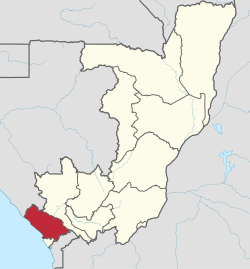
Translation Google
Public Health: Chikungunya epidemic declared in Kouilou and Pool
Saturday 9 February 2019 - 11:45
The linear list of the first department lists one thousand and forty-three cases in eleven of its localities. Mindouli district, in the second department, is also affected and the government is already hard at work for the response.
The district of Diosso, in the Kouilou department, is the epicenter of the epidemic. The first cases were identified on January 7th. "The entomological surveys carried out on 29 and 30 January 2019 in Diosso, Matombi, Doumanga and Les Saras made it possible to collect mosquitoes including sixty-seven belonging to the genus Aedes and sixty-three of the species albopictus, responsible for the chikungunya disease" said the Minister of Social Affairs and Humanitarian Action, Antoinette Dinga-Dzondo, in the government statement made on February 9 in Brazzaville. In addition, several localities in the Kouilou department have favorable ecological conditions for the proliferation of observed mosquito species, she said.
The district of Mindouli, in the department of Pool, is also concerned according to the analysis reports carried out at the National Institute for Biological Research in the Democratic Republic of Congo. The laboratory is accredited by the World Health Organization.
...



Comment